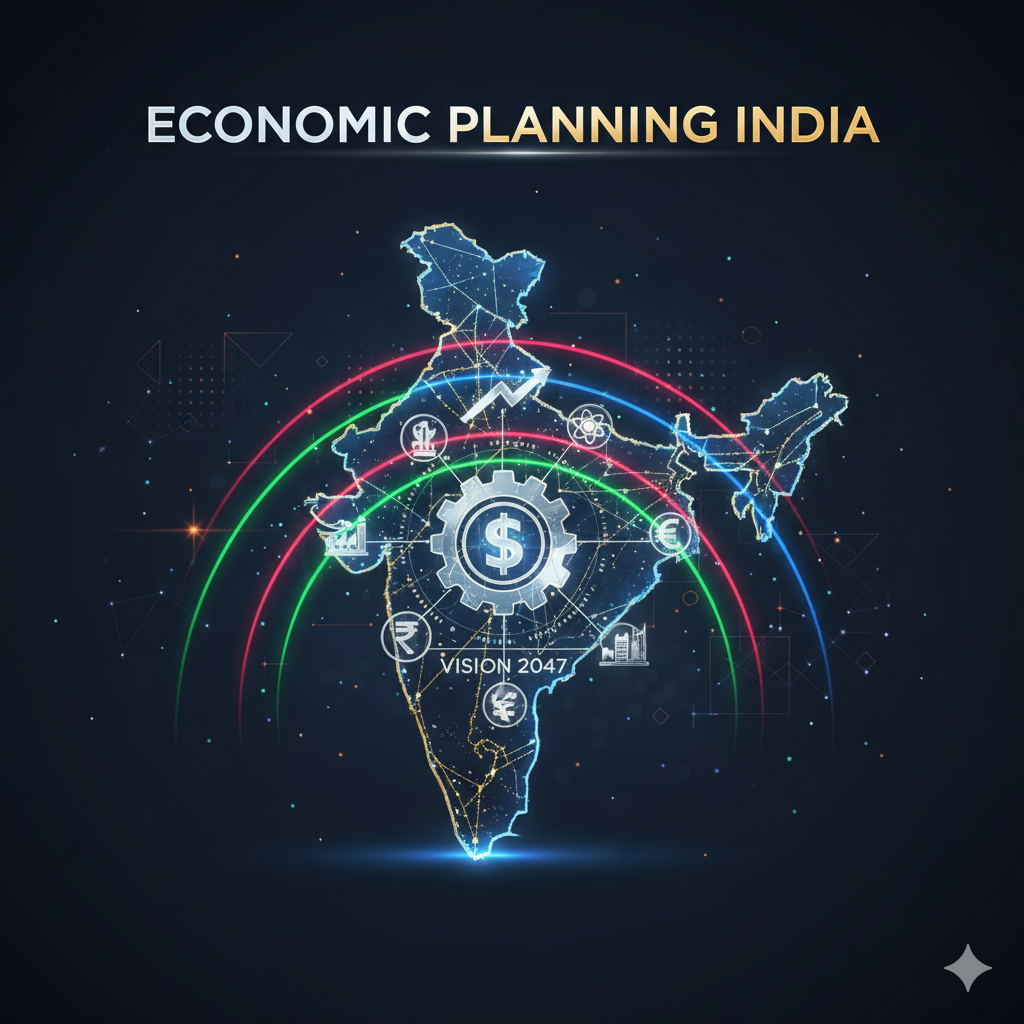Introduction
In the context of global economic development, financial inclusion refers to the process of ensuring that individuals and businesses, regardless of their financial status, have access to useful and affordable financial products and services. These include payments, credit, insurance, and savings that are delivered in a responsible and sustainable manner. In India, financial inclusion has evolved as a critical tool for ensuring inclusive economic growth—a process through which all sections of society, especially the marginalized and underprivileged, can benefit from economic opportunities.
In a country like India, where disparities in access to basic services and financial resources are widespread, financial inclusion plays a vital role in bridging gaps and reducing inequalities. This essay delves into the concept of financial inclusion, its significance for inclusive economic growth in India, and how the Indian government’s financial inclusion agenda has evolved over the years to foster equitable development.
Understanding Financial Inclusion
Definition of Financial Inclusion
Financial inclusion is not just about having access to a bank account. It encompasses a broader range of services that empower individuals to participate fully in the economy. The term can be broken down into the following key components:
- Access to Financial Products and Services: Ensuring that individuals, especially those from rural or economically disadvantaged backgrounds, have access to bank accounts, credit facilities, insurance products, and pension schemes.
- Affordable Services: Financial services must be affordable and tailored to the needs of low-income groups. This includes low-cost bank accounts, microloans, and microinsurance.
- Financial Literacy: Educating individuals about the importance of saving, managing finances, and understanding financial products is a critical aspect of inclusion.
- Physical and Digital Accessibility: While bank branches have traditionally been the physical means of accessing financial services, digital platforms like mobile banking and internet banking are becoming increasingly important in reaching remote areas.
Dimensions of Financial Inclusion
- Geographic Inclusion: This refers to the expansion of financial services to rural and remote areas where traditional banking infrastructure is limited.
- Social Inclusion: This ensures that marginalized groups such as women, lower castes, tribal communities, and the elderly have equal access to financial services.
- Economic Inclusion: Financial inclusion aims to bring people into the formal financial system so they can access the tools necessary to grow their businesses, save, and invest.
Significance of Financial Inclusion for Inclusive Economic Growth
Financial inclusion is pivotal for inclusive economic growth because it provides the tools needed to uplift the economically marginalized sections of society. Here are several reasons why it is vital:
1. Poverty Alleviation
Access to formal financial services is essential for individuals to move out of poverty. Microloans and small savings accounts allow the poor to invest in income-generating activities such as farming, small businesses, and education. With access to credit, individuals can build assets and improve their living standards.
- Example: Self Help Groups (SHGs), promoted by the Indian government, provide small loans to rural women, empowering them to start businesses and manage household finances.
2. Financial Security and Risk Mitigation
Financial inclusion provides access to insurance and pension schemes, which offer financial security against unforeseen events. Insurance products can help people cope with the financial impact of health emergencies, crop failures, or accidents. Pension schemes ensure that people save for their future and are not financially dependent in old age.
- Example: Schemes like the Pradhan Mantri Jan Dhan Yojana (PMJDY) provide low-income families with access to basic bank accounts and accidental insurance.
3. Increased Investment in Human Capital
Financial inclusion promotes investment in education and healthcare. Access to affordable loans allows people to invest in education and health, leading to long-term human capital development. Student loans allow individuals to pursue higher education, while access to health insurance improves their overall well-being.
- Example: A student from a lower-income family can access a student loan to pursue higher education, eventually improving their earning potential and contributing to the economy.
4. Enhancing Economic Mobility
When individuals have access to banking and financial services, they are better equipped to save, borrow, and invest in their future. This access fosters economic mobility—the ability for individuals and families to improve their financial standing over time.
- Example: Microfinance institutions (MFIs) in India provide loans to individuals who cannot access traditional credit sources, thereby improving their livelihoods and enhancing social mobility.
5. Boosting Entrepreneurship and Employment
Financial inclusion allows people to access credit facilities to start and expand small businesses. Entrepreneurs in rural and underserved areas can access working capital, equipment financing, and expansion loans that help them grow their businesses, leading to job creation and economic diversification.
- Example: Entrepreneurs in rural Uttar Pradesh can get loans through MUDRA Yojana, which helps them establish small businesses and hire local workers.
6. Promoting Gender Equality
Access to financial services is a powerful tool for women’s empowerment. By enabling women to access savings accounts, credit, and insurance, financial inclusion reduces gender inequality and improves women’s participation in the economy.
- Example: The Pradhan Mantri MUDRA Yojana (PMMY) has significantly improved access to credit for women entrepreneurs in India, allowing them to start and run small businesses.
Evolution of the Financial Inclusion Agenda in India
The Indian government has recognized the importance of financial inclusion in achieving inclusive economic growth and has implemented a range of policies and initiatives over the years. Here is a brief overview of the evolution of the financial inclusion agenda in India:
1. Early Initiatives: Nationalization of Banks (1969)
The journey towards financial inclusion in India began in 1969, when the government nationalized commercial banks to make banking services available to a larger section of society. The aim was to address the credit needs of agriculture, small-scale industries, and rural areas, which were neglected by private banks.
2. Launch of the Rural Credit Policy (1970s-1980s)
In the 1970s and 1980s, India’s focus was on expanding rural credit through cooperative banks and regional rural banks (RRBs). The government introduced several policies to ensure that credit reached farmers, small entrepreneurs, and rural communities. Priority sector lending was also introduced to mandate banks to lend a certain percentage of their loans to priority sectors such as agriculture, education, and housing.
3. Financial Inclusion as a Policy Goal (2000s)
The early 2000s saw a more structured approach to financial inclusion. With the rise of microfinance institutions (MFIs) and self-help groups (SHGs), there was an emphasis on reaching out to the unbanked and underbanked populations, especially in rural areas.
- 2005: The National Rural Employment Guarantee Act (NREGA) aimed at providing employment to rural households, further driving demand for financial services in these areas.
4. Pradhan Mantri Jan Dhan Yojana (PMJDY) (2014)
In 2014, the Indian government launched the PMJDY, a landmark financial inclusion initiative. It aimed to provide universal access to banking, especially for the poor and marginalized populations. The program ensured that every household had access to a basic bank account, accidental insurance, and life cover. It was an important step towards achieving universal financial inclusion and became the world’s largest financial inclusion initiative.
- Impact: By 2021, over 40 crore accounts had been opened under PMJDY, with an aggregate balance of over ₹1.5 lakh crore.
5. Digital Financial Inclusion: UPI and Mobile Banking
The advent of digital technologies has drastically transformed India’s financial inclusion landscape. The Unified Payments Interface (UPI) and mobile banking platforms have enabled people from remote and rural areas to access financial services via smartphones.
- Aadhaar-linked Payments: The introduction of Aadhaar, the country’s biometric identification system, allowed for direct benefit transfers (DBT), ensuring that welfare schemes and subsidies reached the intended beneficiaries efficiently.
6. Financial Literacy and Digital Banking Initiatives
In recent years, the focus has shifted towards enhancing financial literacy and encouraging digital banking. Initiatives such as the National Strategy for Financial Education (NSFE) and the India Post Payments Bank (IPPB) have aimed at improving financial awareness and providing easy access to digital banking services, even in remote areas.
Conclusion
Financial inclusion is a powerful driver of inclusive economic growth. In India, it has the potential to uplift millions of individuals from poverty, provide them with tools to enhance their economic mobility, and empower marginalized communities, particularly women. The Indian government’s commitment to financial inclusion, through schemes like PMJDY, MUDRA, and the promotion of digital banking, has made significant strides in improving access to financial services across the country.
However, challenges remain in fully achieving universal financial inclusion, particularly in rural and remote areas. As technology continues to evolve and more innovative financial products become available, India is well on its way to achieving comprehensive financial inclusion, which will ultimately support sustainable economic growth, reduce inequality, and improve the quality of life for millions of people.




